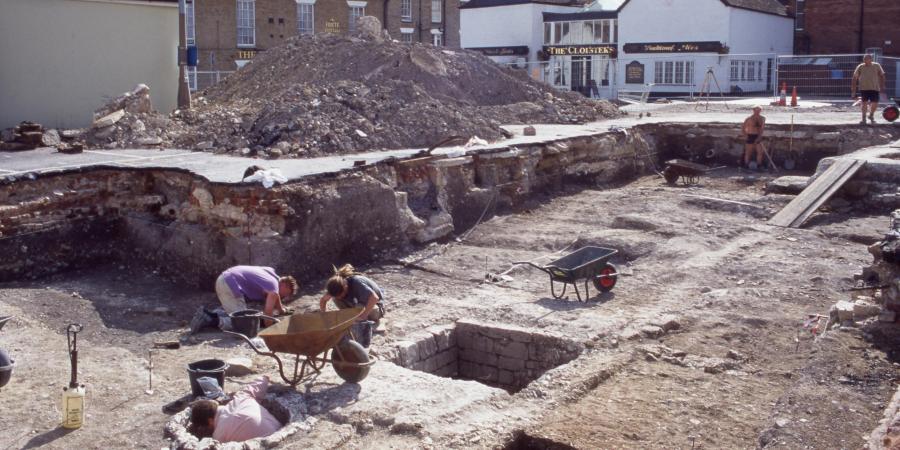The number of archaeological projects undertaken in Salisbury increased in the years after 1991. These projects were marked by ever improving standards of excavation, which reflected on the value of the results. It is with this knowledge that we approach the corner of Ivy Street and Brown Street where, in 1994, two trenches were excavated on either side of the Queen’s Arms public house. This building retains traces of 14th century construction in its east range, making it a rare survivor of the original city. The excavations on the Ivy Street frontage, to the west of the Queen’s Arms, showed that these tenements had apparently remained largely undeveloped throughout the medieval and post medieval periods, a fact largely confirmed by Naish, whose survey of 1716 showed a break in the terrace. Adjacent properties were clearly occupied as evidenced by the presence of medieval pits, including two cess pits.
The excavations on Brown Street, in contrast, revealed traces of buildings across two tenements, which were separated by a mortared flint boundary wall. Land to the north contained only limited evidence of occupation, including additional cesspits. The tenement to the south contained the foundations of an impressive medieval building, which was aligned along the street frontage. The building measured at least 7.5 m long and extended approximately 5.5 m back from the street frontage, a measurement which recurs in our journey through Salisbury. The interior of the building was sub-divided with internal partitions. The footprint of this building, which was probably constructed in the 13th or 14th century, apparently remained largely unmodified throughout its existence. Some idea of living conditions can be assessed by the presence of a cess pit, identified by traces of human excreta, in an extension at the back of the property. This unsavoury internal feature of the house was originally unlined but was subsequently reconstructed with a chalk block lining in the later medieval period. These cottage-type buildings, occupied by families and individuals, create a picture that has been replicated many times on excavated street frontages in Salisbury.
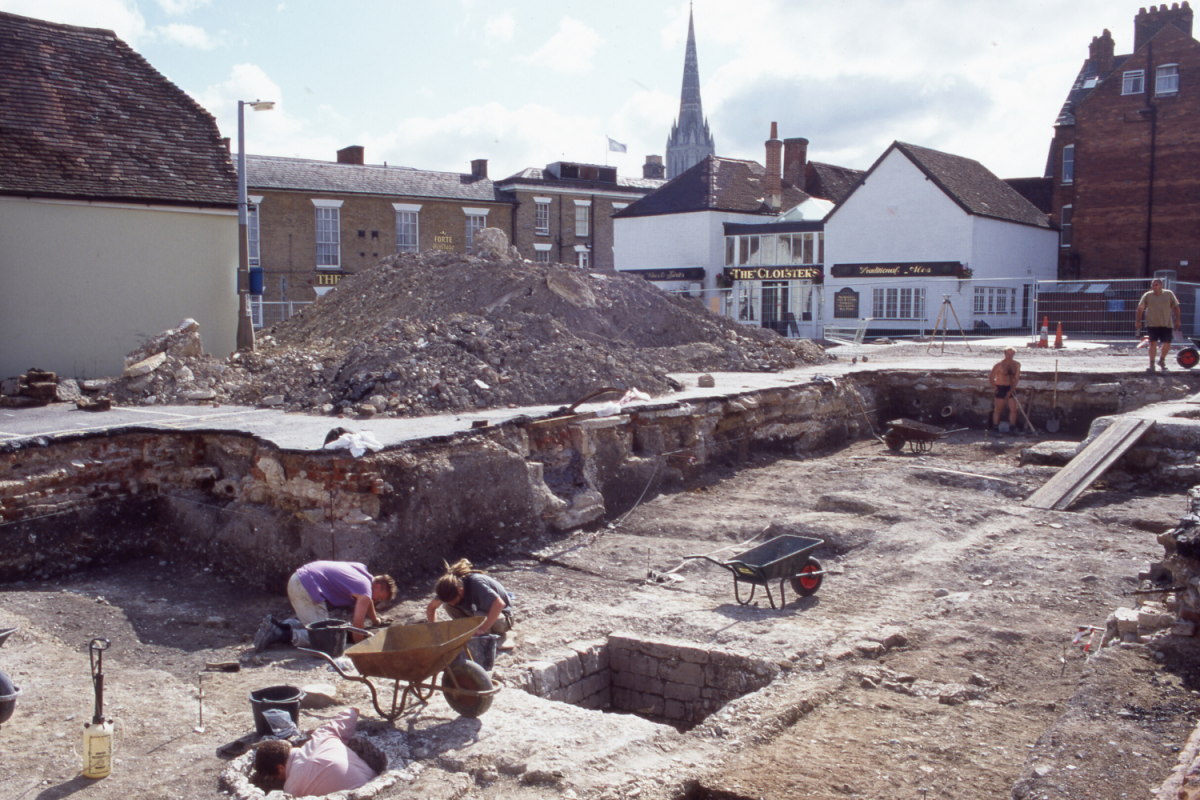
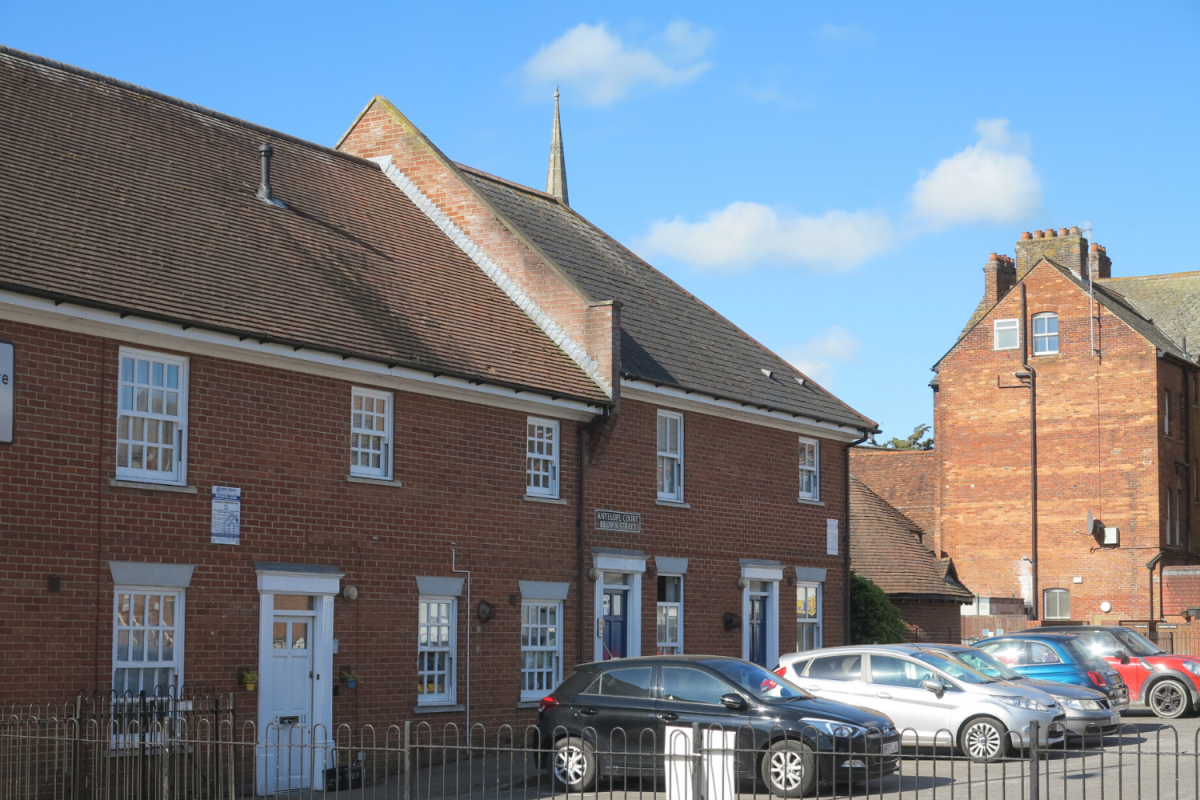
Wessex Archaeology's excavations at Brown Street seen in 1994 (left) and the site in 2020 (right). Note the square cess pit visible in the centre foreground of the 1994 excavations
The development of improved standards of excavation and recording demonstrated a more professional approach to the archaeological work. The increased use of environmental sampling made it possible to analyse in detail the contents of the cesspits, which as we saw four weeks ago at 7-11 Brown Street, provides an invaluable source of detail relating to diet. In addition, the detailed recovery of pottery from well-recorded layers marked the start of a slow, on-going process of building a dated pottery sequence for the city, a challenge which continues to the present day.
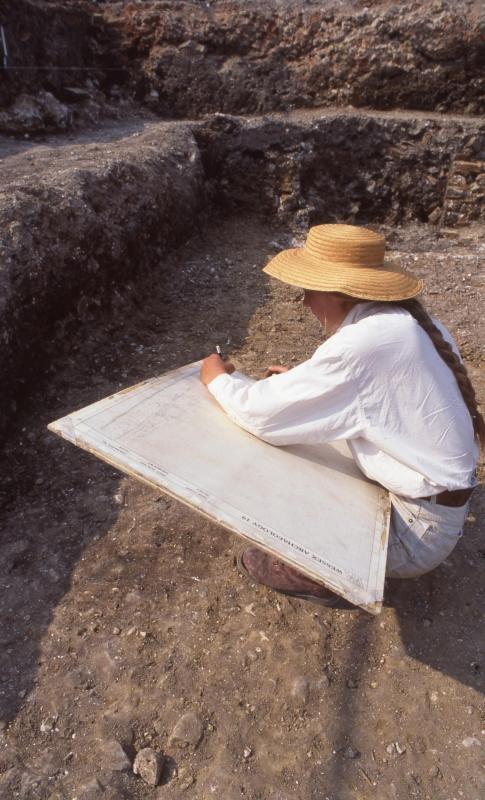
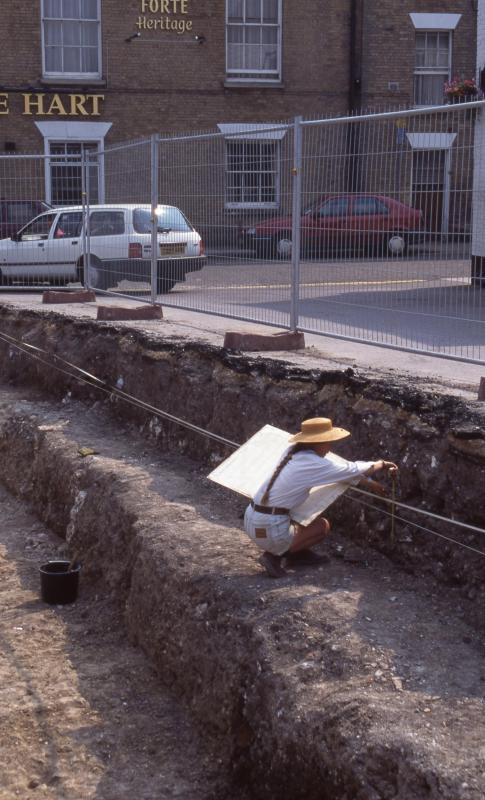
Detailed recording taking place during Wessex Archaeology's 1994 excavations, which also involved environmental sampling and recovery of pottery from well-recorded layers
The report also included a detailed study of the site by local historian John Chandler derived from documentary sources. This discipline can embellish the archaeological results with details of real people associated with individual properties, providing their names, professions and status. Most of the documents contained details related to the corner plot, now the Queen’s Arms, which depicts a high-status, 14th century, domestic residence. The property was gifted to the Dean and Chapter of the cathedral in the terms of a will in 1410 and remained in their ownership until 1877. This building became a public house in the early 16th century.
The will of 1410 also contained details of the tenements which formed the excavated areas, on both sides of the Queen’s Arms. The document indicates that both plots were both owned by William Warmwell, suggesting that they may have been conjoined. Warmwell, who died in 1412, was a wealthy resident, who owned numerous properties in the city including a residence close to the market. Both tenements remained in single ownership in the later medieval period when they were acquired by the Chafyn family. This wealthy dynasty, originally from Warminster, owned large numbers of properties and acquired these plots from about 1550, retaining ownership to at least 1715. The Brown Street tenements subsequently became stables by the 18th century, associated with the Antelope Inn, which was located to the north-west of the site.
These documentary sources suggest that much of the city was probably owned by a relatively small number of wealthy landlords, who maintained ownership of multiple properties. Sadly, the names and professions of the residents themselves are less well recorded. The lives of these individuals are best represented by the results of the excavation, in the debris they threw away and traces of the buildings they lived in. The processes involved in recovering these stories continue to interest ordinary members of the public, both young and old.

By Phil Harding, Fieldwork Archaeologist
Published results can be found on page 20 of Wiltshire Archaeological and Natural History Magazine 93, available to download here:
Do you want to support our work to share the story of Salisbury with the community? Please consider supporting our new film, Salisbury Uncovered.
